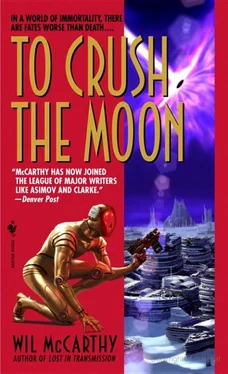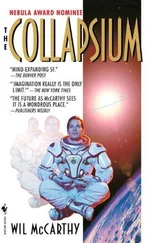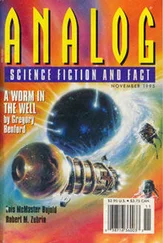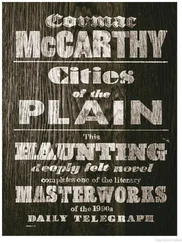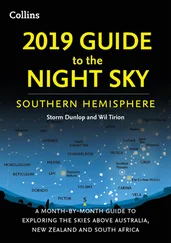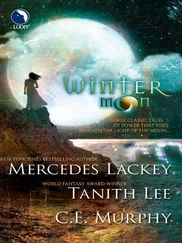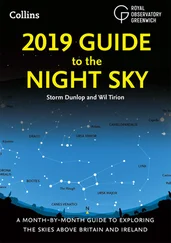And it seemed like very good advice indeed, here at the start of something wonderful.
Appendix A-1
Rights of the Dead
It was an interesting statutory question, still largely unresolved: if these interactive messages were the only remains of a legal individual, did they have the right to be played back indefinitely as holograms? Or to be burned into blank human bodies and treated as people? They couldn’t possibly hold all the memories of their original senders, all the nuance and subtlety of a lifetime’s experience. They were doppelgängers at best—superficial, hollow inside—and at worst they were shadows or caricatures of the original person, laughably incomplete.
And there was another question here, not so much legal as moral: these deceased persons had won their reincarnation at the expense of their fellow colonists. Pushing and bribing their way to the lifeboats, as it were. This didn’t warrant punishment per se, but neither did it encourage charity.
A few well-to-do families had claimed such messages as prodigal children returned to the fold, and had tried to give them their old lives back. But they’d had to hire teams of cognitive and cellular surgeons for weeks at a time, and the results were not encouraging: people who could hold a brilliant conversation on flowers but didn’t recognize one when they saw it. People who could barely feed or dress themselves, who behaved badly in public, who mistreated the unfamiliar flesh that housed them. And even in the famous “Smith and Jones” trial where two partials had been declared “legal and functional children with the hope of future maturity,” the families’ petitions for public assistance had been roundly and loudly denounced.
One could not produce deutrelium in a fax machine. The machine could only assemble the atoms which existed in its own buffers—a stable subset of the periodic table. But in the strange ways of the sprawling collapsiter network that was the Nescog, one could transmit any isotope, stable or non-, from an Elemental stockpile to any point with a functioning network gate.
Not antimatter, of course (or “aye-ma’am” as the sailors called it). Not collapsium or neutronium, nor any material or object which incorporated durable spacetime defects into its structure. But anything else, yes. So with a few hours’ light lag, deuterium and trelium (respectively, heavy hydrogen and light helium—also known as “fusion lotion” or “doot toot” or “treat”) could be ordered direct from the gas mines of Jupiter and Saturn, and charged to Bruno’s account. Hoses and pipelines could not, alas, be sealed against the fax’s print plate, but a good old-fashioned barrel could roll right through.
But hell, all of Sol’s gas giants were prettier than Barnard’s, except perhaps for Uranus. And Sorrow was no Earth, and Planet One was no Mercury, and Barnard’s two asteroid belts were paltry middens against the grandeur of Sol’s one. That was the problem with red dwarf star systems: they occupied only the top three rows of the periodic table. Chlorine was the heaviest of their common elements, leaving little room for exotic aero- and geochemistry. They were, in a word, boring.
Accipe signaculum doni Spiritus Sancti—Traditional Latin benediction: “Be sealed with the gift of the Holy Spirit.” Employed by several Old Modern religions as a prayer for the dying.
Aft—(adj, adv) One of the ordinal directions onboard a ship: along the negative roll axis, perpendicular to the port/starboard and boots/caps directions, and parallel and opposite to fore.
AKA—(abbrev.) Also Known As.
Ako’i—(n) Tongan word meaning “teacher.”
Antiautomata—(adj.) Describes any weapon intended for use against robots.
Apenine—(prop n) Province of the Luner nation of Imbria which includes the capital city of Timoch.
Arc de commencer—(n) A hypothetical device for diverting photons to a chronologically “earlier” point in spacetime, for the purpose of altering a historical outcome. Attributed to Bruno de Towaji.
Ash—(prop n) A planette constructed in the late Queendom period at the L1 Lagrange point between Earth and Luna. Symbolically, the middle ground between two worlds. Later ejected by n-body perturbations.
Astaroth—(n) Luner nation including the south pole and southern portions of the former Nearside and Farside, with a population of approximately five million.
Astrogation—(n) Astral navigation. In common use, the art or process of navigating a starship.
AU—(n) Astronomical Unit; the mean distance from the center of Sol to the center of Earth. Equal to 149,604,970 kilometers, or 49.9028 light-seconds.
Autronic—(adj) Capable of self-directed activity. Commonly used to differentiate “robots” from teleoperated or “waldo” devices.
Aye-ma’am—(n) Colloquial abbreviation for antimatter.
Barnardean—(adj) Of or pertaining to Barnard, the first of the Queendom’s thirteen colonies.
Barocline—(n) Any layer boundary marked by an abrupt change in pressure.
Biomod—(n) Biological modification. Any genetic, synthetic, Lamarckian, or bionic enhancement, whether heritable or non-.
Blindsight—(n) A condition in which the conscious portions of the neocortex (primarily the frontal lobes) are prevented from receiving input through the visual cortex, while the brain stem receives its own visual inputs normally. Although blindsight sufferers are able to avoid obstacles and grasp specific objects on demand, they experience none of the sensation associated with “seeing.”
Blitterstaff—Also Blitterstick . (n) An antiautomata weapon employing a library of rapidly shifting wellstone compositions. Attributed to Bruno de Towaji.
Bootward—(adj, adv) One of the six ordinal directions onboard a ship: along the positive yaw axis, perpendicular to the port/starboard and fore/aft directions, and parallel and opposite to caps.
Brickmail—(n) An allotrope of carbon consisting of benzene rings interlocked in a three-dimensional matrix. Brickmail is the toughest known nonprogrammable substance.
Bunkerlite—(n) Copyrighted, superreflective wellstone substance employed as protective cloth or armor. Attributed to Marlon Sykes.
Campanas—(prop n) Capital city of the Luner nation of Nubia.
Capward—(adj, adv) One of the six ordinal directions onboard a ship: along the negative yaw axis, perpendicular to the port/starboard and fore/aft directions, and parallel and opposite to boots.
Cerenkov radiation—(n) Electromagnetic radiation emitted by particles temporarily exceeding the local speed of light, e.g., upon exit from a collapsium lattice.
Chromosphere—(n) A transparent layer, usually several thousand kilometers deep, between the photosphere and corona of a star, i.e., the star’s “middle atmosphere.” Temperature is typically several thousand kelvins, with roughly the pressure of Earth’s atmosphere in Low Earth Orbit.
Collapsar—(n) see Hypermass
Collapsiter—(n) A high-bandwidth packet-switching transceiver composed exclusively of collapsium. A key component of the Nescog.
Читать дальше
